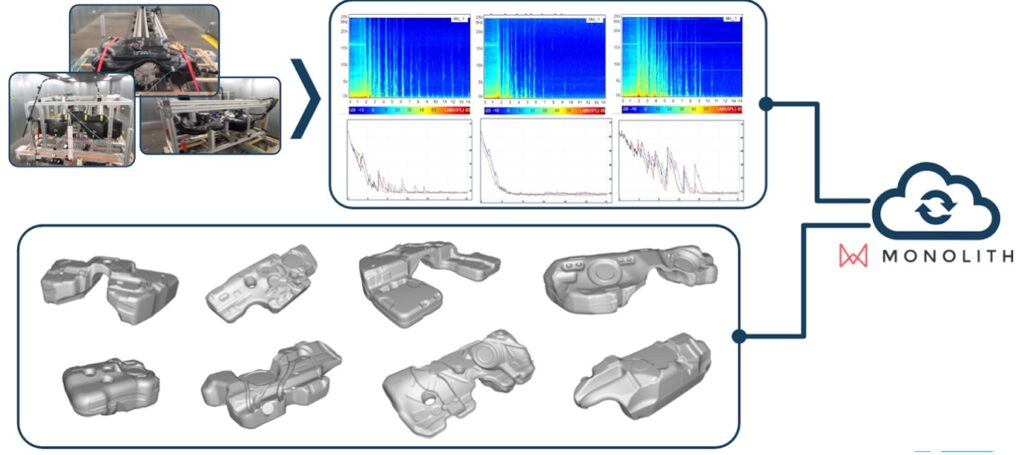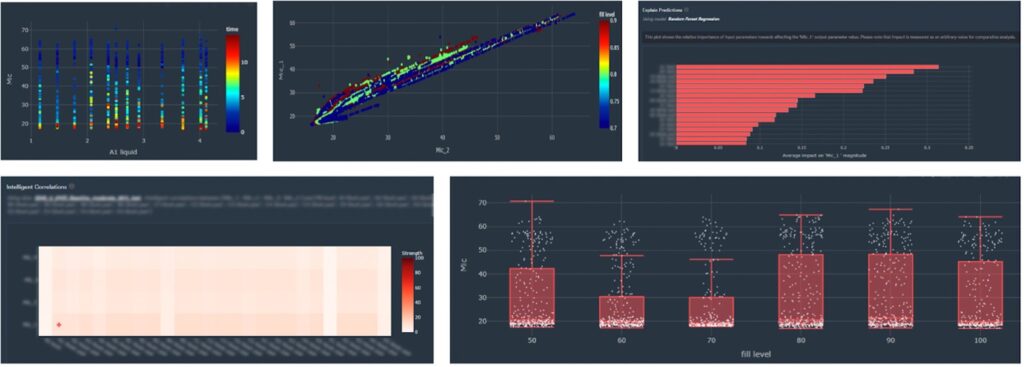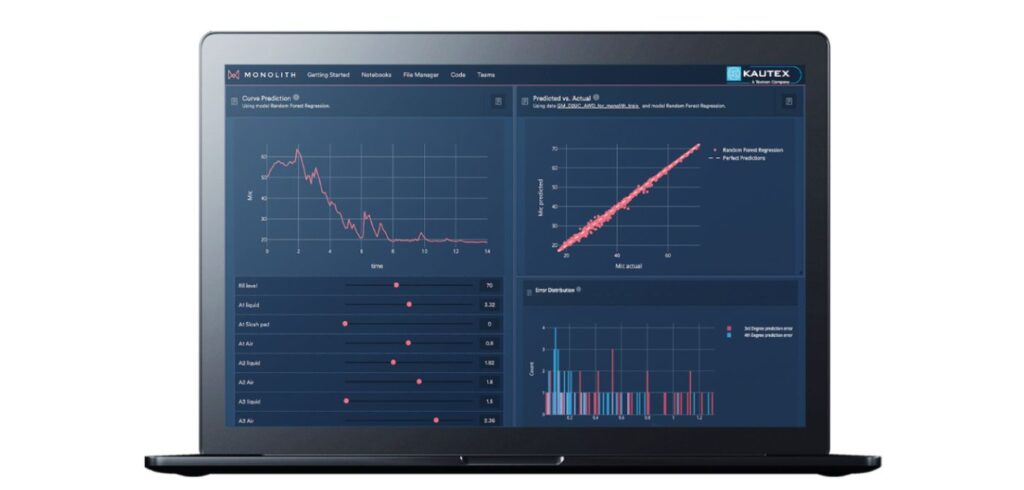*Sponsored article
The Kautex Textron validation engineering team used Monolith’s self-learning models to solve a complex fuel “sloshing” problem, reducing design iterations, prototyping and testing costs. They were able to accurately predict fuel sloshing noise during vehicle deceleration, opening the door for engineers to use AI to solve further engineering challenges.
Predict fuel sloshing noise with unprecedented accuracy using a data-driven approach
Fuel sloshing noise prediction during vehicle deceleration has long been a difficult challenge for engineers to model, test and understand. However, the team at Kautex Textron has now successfully tackled this complex issue using Monolith AI software. By combining their engineering skills, acoustic data and AI technology, the engineers are now able to quickly understand the connection between tank designs, test parameters and sloshing noise, and accurately predict the expected noise level of new, previously untested designs in untested configurations (Figure 1). This ground-breaking achievement solving an intractable physics problem was made possible through the use of advanced AI software and the domain expertise of Kautex Textron’s skilled engineers.

Experimental testing can be costly, time-consuming and labour-intensive, especially if engineers need to conduct numerous studies to test each variable and rely heavily on physical prototypes. Traditional simulation methods like computational fluid dynamics (CFD) that are used for virtual testing can be expensive to implement and are based on complex assumptions. This is where data-driven methods come in handy. The data-driven approach offers a more efficient and cost-effective solution for conducting virtual testing.
Monolith AI software was used to load, explore and exploit the time series and 3D data, train machine learning models and make new predictions for unseen test scenarios, and find an optimal configuration. Adding 3D information to tabular models improved the results of predictions of a new design. With the actual results considering both the trend of the dB versus time curve and the level of difference between the prediction and test curves, the AI models can now be used to replace CFD simulations to predict the sloshing noise of a fuel tank with a new fill level.

Engineers create faster with AI
The core of the Kautex engineers’ challenge was to reliably understand the relationship between the properties of the fuel tank, the test parameters and the resulting sloshing noise – an intractable physics procedure typically requiring multiple physical tests with prototype tank shapes filled at differing levels. After exploring their data (Figure 2), the team created accurate AI models using acoustic test data, 3D CAD fuel tank shapes, and different inner component set-ups (Figure 3). These methods helped to gain new insights into complex product behaviour and create a toolchain that provides valuable predictions significantly faster than even the most state-of-the-art simulations can offer.

For the 3D model, the patent-pending autoencoder model in Monolith was trained using Kautex’s existing 3D CAD information by passing input data through its network layers (as shown on the left side of Figure 4). Autoencoders are a special type of neural network that, once trained, map high dimensional inputs, in this case 3D fuel tanks, into a lower dimensional parameterization that encodes much of the original information into a far smaller number of parameters. The autoencoder is able to reconstruct the original geometries at the end of the process.

Using Monolith AI software built specifically for engineering applications, one can efficiently use existing test data to build highly accurate AI models that instantly predict the performance of systems and explore a wider variety of operating conditions. This enables engineers to make optimal use of test facilities, reduce testing times and leverage decades of data, using AI recommendations for the best next conditions to test in.
By training AI on previous experimental test data, engineers can bypass the need for physics-based CFD simulations. The trained AI model can then directly predict the performance of a new unseen design, saving time and resources while fulfilling all customer requirements. Such models can also help test engineers by suggesting what the next tests they should perform are.
Monolith, a no-code AI software, uses engineering test data to build highly accurate AI models that instantly predict the performance of systems in a wider variety of operating conditions. This enables test engineers to make optimal use of their test facilities, and reduces testing times using AI recommendations for the best next conditions to test in. This has environmental and financial benefits for organizations by saving costs of reducing the overall number of tests necessary to characterize complex system behaviour without jeopardizing product quality or time-to-market.
Read the summary and download the case study here.


